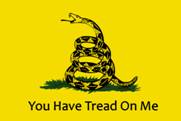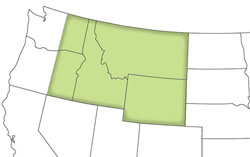The following definitions for “United States” are taken from Ballantine’s Law Dictionary (3rd edition) and Bouvier’s Law Dictionary (6th edition):
(Ballantine’s)
The Union of several states, each equal in power, dignity, and authority, brought into being by the Constitution, emanating from and adopted by the people in whom the sovereignty resides [McCulloch v. Maryland (US) 4 Wheat 316, 4 L Ed 579].
- A Federal government was created in 1777 by the union of thirteen colonies of Great Britain in “certain articles of confederation and perpetual union,” the first one of which declared that “the stile of this confederacy shall be the United States of America.” Each member of the confederacy was denominated a “state.” The confederacy, owing to well-known historical reasons, having proven a failure, a new Constitution was formed in 1787, by “The people of the United States” “for the United States of America,” as its preamble declares [Downes v. Bidwell, 182 US 244, 249, 45 1, Ed 1088, 1092, 21 S Ct 770]. See expressions following which begin with “United States,” also terms and expressions beginning “federal” or “national.”
A body politic and corporate, capable of attaining the objects for which it was created, by the means which are necessary for their attainment [Van Brocklin v. Tennessee, 117 US 151, 29 L Ed 845, 6 S Ct 670].
A person for the purpose of a pretrial deposition under Federal Rule 26(a) of the Federal Rules of Civil Procedure [23 Am J2d Dep § 242].
- Inclusive in reference to transactions with foreign nations of all territories subject to the jurisdiction of the Federal Government, wherever located [Downes v. Bidwell, 182 US 244, 45 L Ed 1088, 21 S Ct 770].
(Bouvier’s)
-
The name of this country. The United States, now thirty-one in number, are Alabama, Arkansas, Connecticut, Delaware, Florida, Georgia, Illinois, Indiana, Iowa, Kentucky, Louisiana, Maine, Maryland, Massachusetts, Michigan, Mississippi, Missouri, New Hampshire, New Jersey, New York, North Carolina, Ohio, Pennsylvania, Rhode Island, South Carolina, Tennessee, Texas, Vermont, Virginia, Wisconsin, and California.
-
The territory of which these states are composed was at one time dependent generally on the crown of Great Britain, though governed by the local legislatures of the country. It is not within the plan of this work to give a history of the colonies [on this subject the reader is referred to Kent’s Com. Sect; Story on the Constitution, Book 1; 8 Wheat. Rep. 543; Marshall, Hist. Colon].
-
The neglect of the British government to redress grievances which had been felt by the people, induced by the colonies to form a closer connexion than their former isolated state, in the hopes that by a union they might procure what they had separately endeavored, in vain, to obtain. In 1774, Massachusetts recommended that a congress of the colonies should be assembled to deliberate upon the state of public affairs; and on the fourth of September of the following year, the delegates to such a congress assembled in Philadelphia. Connecticut, Delaware, Maryland, Massachusetts, New Hampshire, New Jersey, New York, North Carolina, Pennsylvania, Rhode Island, South Carolina, and Virginia, were represented by their delegates, Georgia alone was not represented. This congress, thus organized, exercised de facto and de jure, a sovereign authority, not as the delegated agents of the governments de facto of the colonies, but in virtue of the original powers derived from the people. This, which was called the revolutionary government, terminated only when superseded by the confederated government under the articles of confederation, ratified in 1781 [Serg. on the Const. Intr. 7, 8].
-
The state of alarm and danger in which the colonies then stood induced the formation of a second congress. The delegates, representing all the states, met in May, 1775. This congress put the country in a state of defiance, and made provisions for carrying on the war with the mother country; and for the internal regulations of which they were in need; and on the fourth day of July, 1776, adopted and issued a Declaration of Independence. The articles of confederation, adopted on the first day of March, 1781 [1 Story on the Const. 225; 1 Kent’s Comm. 211, continued in force until the first Wednesday in March, 1789, when the present constitution was adopted, 5 Wheat. 420].
-
The United States of America are a corporation endowed with the capacity to sue and be sued, to convey and received property [1 Marsh. Dec. 177, 181]. But it is proper to observe that no suit can be brought against the United States without authority of law.
-
The states, individually, retain all the powers which they possessed at the formation of the constitution, and which have not been given to congress.
-
Besides the states which are above enumerated, there are various territories, which are a species of dependencies of the United States. New states may be admitted by congress into this union; but no new state shall be formed or erected within the jurisdiction of any other state, nor any state be formed by the junction of two or more states, or parts of states, without the consent of the legislatures of the states concerned, as well as of congress [Const. art. 4, s. 3]. And the United States shall guaranty to every state in this union, a republican form of government [Id. art. 4, s. 4]. See the names of the several states; and Constitution of the United States





















